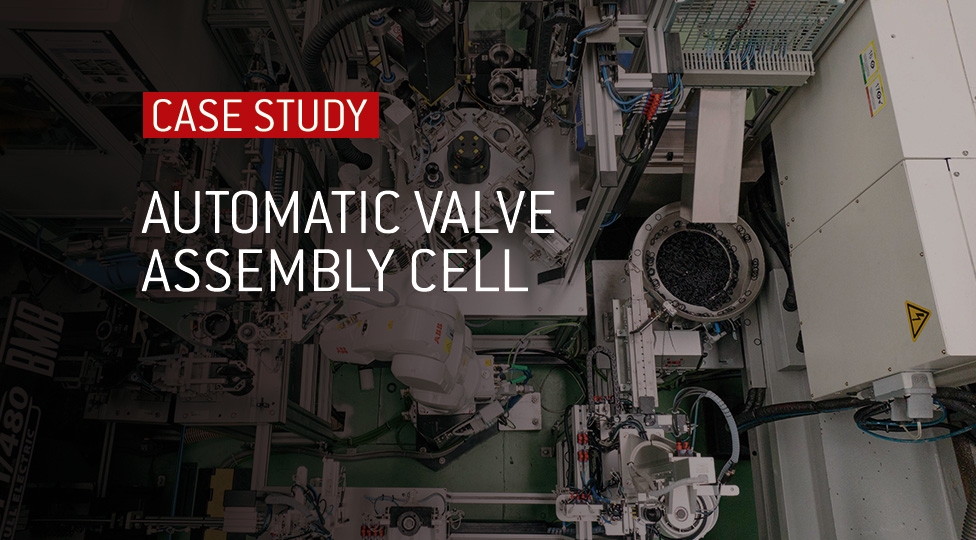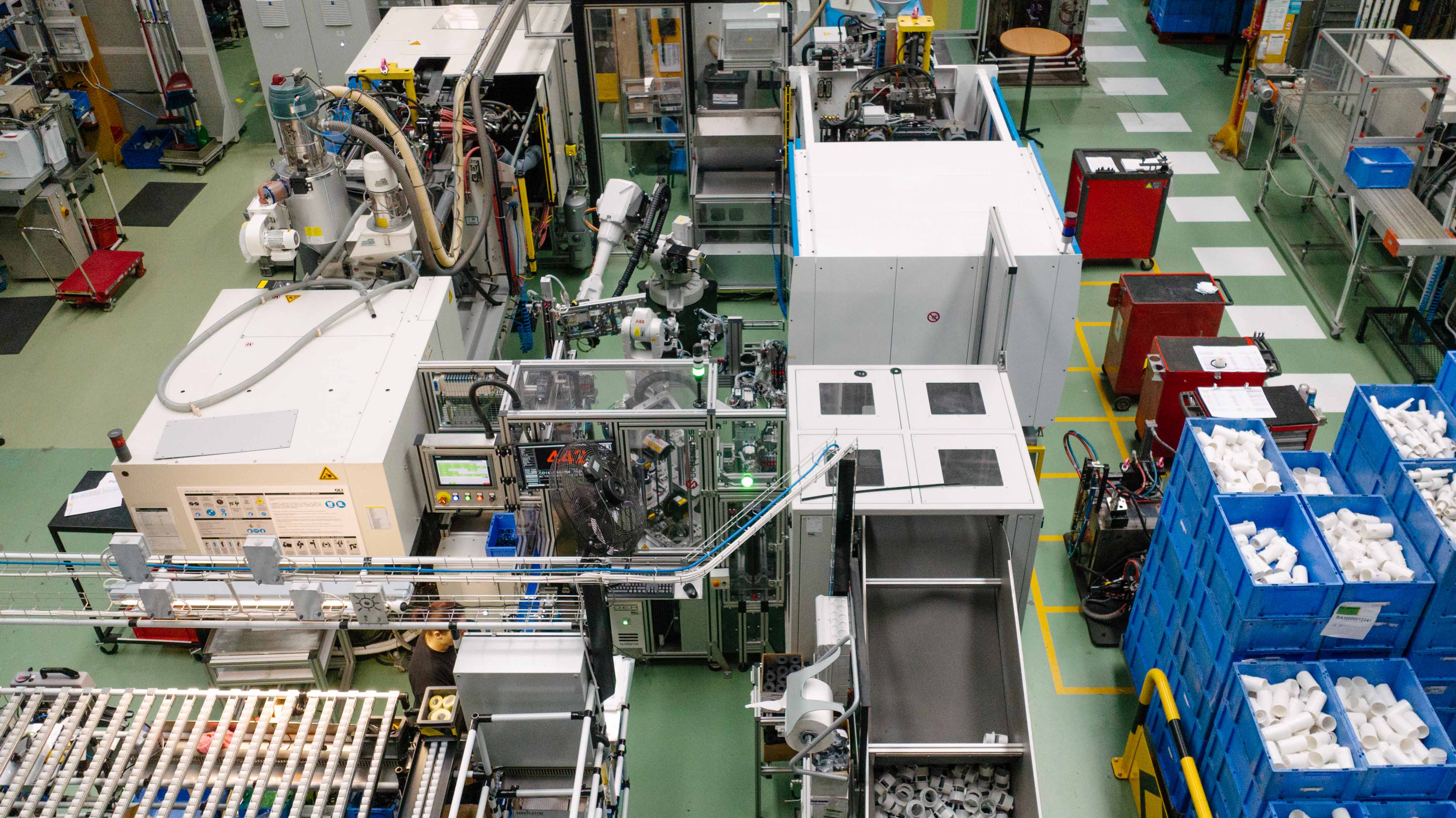
OLI - Sanitary Systems, founded in 1954 in Portugal, went through several different business areas until the 1980s, when it created a toilet cistern production unit, turning bathroom solutions into a hydraulically efficient, comfortable, and safe place for everyone. It stands out for its constant investment in the areas of Research, Development, and Innovation, which has allowed it to achieve a solid position worldwide and, consequently, become one of the Portuguese companies with the highest number of patents.
OBJECTIVE
To build a single piece of equipment that would automate all the processes being carried out manually, to guarantee a production of approximately 3000 units per day.
PROJECT DETAILS
Selmatron's engineering team has developed an automatic assembly cell that optimizes manual production lines, which is a very important step for OLI's industrial process, a reference partner in the plastic injection area. This system has been adapted to the latest needs triggered by the technological evolution of Industry 4.0, with functional monitoring and diagnosis of the various continuous systems and mechanisms, and will catalyze future projects.
This project was designed based on the customer's requirements, from the type of process, maintenance, flexibilization, and solutions integrated into the equipment. In this sense, a cell composed of two injection machines was installed, with two 6-axis manipulators, one of them with significant dimensions to unload the injected cells directly into the molds and to place the assembly devices. Additionally, a second robot was also incorporated to prepare the assembly and transition between stations.
The development of the above-described equipment translated into higher production performance, ensuring compliance with the initially stipulated requirements where it was imperative to fit the machine dimensions with the available floor space. The tightness of the introduced valve is tested and validated as "OK" or "not OK" to then proceed to the laser engraving process, where the batch will be defined through QR code reading with indication of the date and time of production.
Technological Solution
- Handling System
Two robotized solutions by a 6-axis robot: the larger one with the principal responsibility of guaranteeing the manipulation/handling of products in the loading and unloading area of the cells injected directly from the molds and placing them in the assembly devices. And the smaller one, although also responsible for the assembly part, will support the transition between the various stations.
- Sealing Test
In order to avoid manufacturing defects after assembly sequences and to meet conformity, a sealing test is performed to evaluate the integrity of the products and indicate if it is "OK" or "NOT OK."
- Vibratory Feeding System
Existence of vibratory feeders for packaging and positioning various products without the need to change the setup and with the necessary cadence. The integration of this system granted total autonomy to the equipment, leaving the logistics department with the main responsibility of feeding the machine at the previously defined time. The system collaborated in the orientation and organization of the parts, as well as in the ability to feed the various types of parts with a quick change-over.
- Laser Engraving System
The laser engraving system is based on fiber laser technology, which emits artificial optical radiation with a certain power (defined according to the engraving to be executed and the type of material to be engraved). The laser engraving performed in the process marks the batch and, using a QR code, registers the date and time of production.

Customer Testimonial
Manuel Gomes, Director of Engineering at OLI, shared a brief summary of the development and goals achieved with this project: "It allowed us to increase productivity, achieving a production capacity of over 3000 units per day, and at the same time increase our efficiency. We knew in advance that the technical solution would be complex, so it was essential to work in partnership with Selmatron, from the study phase to implementation, to ensure the success of this project."
